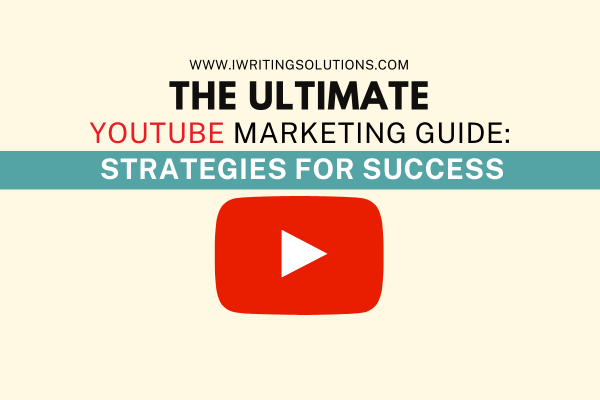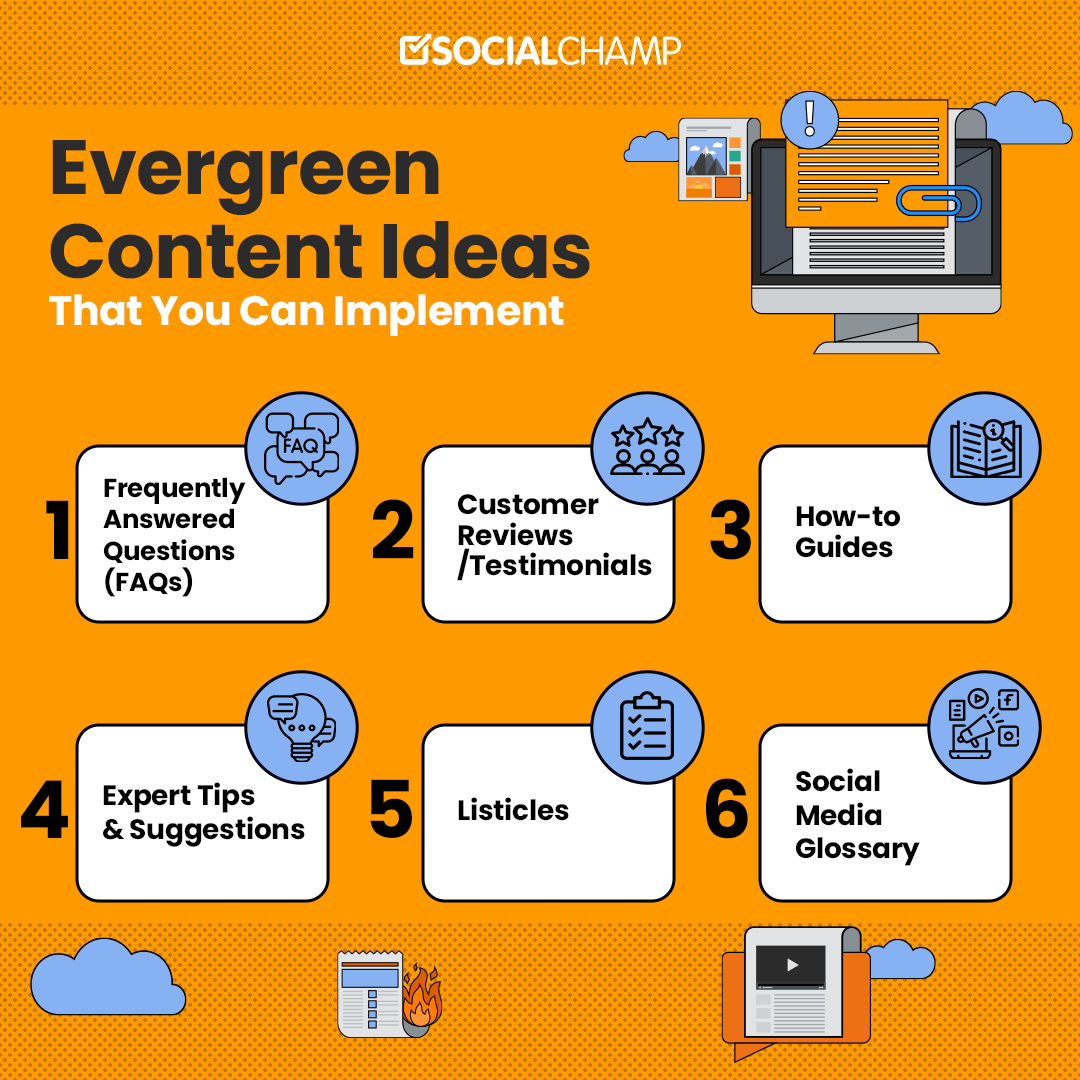Summary |
| YouTube offers vast marketing potential with its reach, engagement, SEO benefits, and monetization avenues.
Successful marketing on YouTube involves setting clear goals, understanding the audience, keyword research, creating quality content, optimizing for search, cross-channel promotion, audience engagement, and performance analysis. |
YouTube stands out as a powerhouse platform with immense potential in digital marketing. With billions of users and countless hours of video content consumed daily, it’s no wonder that businesses and individuals alike are turning to YouTube as a primary marketing tool.
However, having the full potential of YouTube requires a strategic approach. This comprehensive guide will explore the fundamentals of YouTube marketing and provide actionable strategies for success.
Understanding YouTube as a Marketing Platform
Before knowing specific strategies, it’s crucial to understand why YouTube is important to any marketing strategy. Here are some key reasons why YouTube is a valuable platform for marketers:
- Massive Reach: YouTube offers access to a vast audience. In fact, it has over 2 billion logged-in monthly users. This spans demographics, interests, and locations.
- Engagement: Video content has proven to be highly engaging. It captures viewers’ attention and drives deeper connections.
- SEO Benefits: YouTube is the second largest search engine after Google. This makes it a valuable channel for visibility. The good thing also is it drives organic traffic to your content.
- Diverse Content Formats: YouTube accommodates various content formats. For example, tutorials, product reviews, vlogs and live streams. This allows marketers to experiment and find what sound best with their audience.
- Monetization Opportunities: Beyond marketing goals, YouTube offers monetization options such as ads, sponsorships, merchandise sales
Creating a YouTube Marketing Strategy
A successful YouTube marketing strategy begins with clear objectives and a better plan. Here’s a step-by-step guide to crafting your strategy:
1. Define Your Goals
Clearly define your goals to align your efforts with measurable outcomes. This is whether:
- Increasing brand awareness
- Driving website traffic
- Generating leads
2. Know Your Audience
Conduct market research to understand your target audience’s demographics, interests, and preferences. This insight will inform your content strategy. It also helps you create videos that reflect with your audience.
3. Keyword Research
Utilize keyword research tools to identify popular search terms and topics relevant to your niche. Incorporate keywords into your:
- Video titles
- Descriptions
- Tags
This is to improve visibility and attract organic traffic.
4. Create Compelling Content
Invest in quality content that provides value to your audience. Whether educational, entertaining, or inspirational, focus on creating videos that capture attention and engagement.
Consistently posting high-quality videos can build a loyal subscriber base and increase your channel’s visibility. Utilizing trending tools like an AI video creator for YouTube can streamline the production process and help maintain a steady flow of content.
5. Optimize for Search
Optimize your videos for search engines by including the following:
- Relevant keywords
- Writing creative titles and descriptions
- Adding tags
6. Consistency is Key
Maintaining a consistent upload schedule keeps your audience engaged. It also builds power over time. In addition, consistency helps build trust. It also inspire viewers to return for more content.
7. Promote Across Channels
Leverage your other digital channels, such as social media and email newsletters, to promote your YouTube videos and expand your reach.
8. Engage with Your Audience
Foster a sense of community by responding to comments, asking for feedback, and encouraging viewers to participate through likes, shares, and subscriptions.
9. Analyze and Iterate
Use YouTube Analytics to track the performance of your videos and gain insights into audience behavior. You need to:
- Identify trends
- Experiment with different approach
- Continuously refine your approach based on data-driven decisions
Did you find this blog useful? Subscribe Now!
Advanced Strategies for YouTube Marketing Success
Once you’ve established a solid foundation, consider implementing these advanced strategies. This is to take your YouTube marketing efforts to the next level:
1. Collaborate with Influencers
Partner with influencers and industry experts to reach new audiences. Collaborative videos can expose your content to a wider audience. It also drives engagement through shared promotion.
2. Utilize YouTube Ads
Explore the various advertising options available on YouTube, including TrueView ads, display ads, and sponsored cards. Target your ads based on:
- Demographics
- Interests
- Search behavior
3. Optimize for Mobile
Ensure your videos are better for mobile devices. Use thumbnails, concise titles, and clear calls-to-action. This is to widen engagement on smaller screens.
4. Experiment with Live Streaming
Take advantage of YouTube’s live streaming feature to connect with your audience in real time. You can:
- Host Q&A sessions
- Product launch
- Behind-the-scenes events
5. Create Evergreen Content
While trending topics can drive short-term traffic, focus on creating evergreen content that remains relevant and valuable over time. Evergreen videos have the potential to attract consistent views and generate long-term ROI.
6. Implement Email Marketing
Grow your YouTube audience and nurture relationships with your subscribers through email marketing. Encourage viewers to subscribe to your channel. You should also send regular updates, exclusive content, and personalized recommendations via email.
7. Capitalize on Trends
Stay informed about:
- Industry trends
- Viral topics
- Cultural development that reflect with your target audience
Capitalize on popular topics by creating timely, related content that captures attention and drives engagement.
8. Optimize for Conversions
Beyond views and engagement metrics, track conversions such as website visits, leads, and sales generated from your YouTube videos. You should have:
- Calls-to-action
- Link annotations
- Video end screens to direct viewers
Measuring Success and ROI
Effective measurement is important for evaluating the success of your YouTube marketing efforts and demonstrating ROI. Here is the table of the key metrics to track:
| Key Metrics | Description |
| Views | Monitor the number of views your videos receive. This is to gauge their reach among your audience. |
| Watch Time Analysis | High watch time indicates engaged viewership and can positively impact your video’s visibility on YouTube. |
| Engagement | Track engagement metrics such as likes, comments, shares, and subscriber growth. This is to assess audience communication and view towards your content. |
| Traffic Sources | Analyze where your traffic is coming from. It is whether through YouTube search, suggested videos, external links, or direct traffic. |
| Conversion Rate | Measure the conversion rate of viewers who take the desired action after watching your videos. This is whether it’s visiting your website, signing up for a newsletter, or making a purchase. |
| ROI Calculation | Calculate the return on investment (ROI) of your YouTube activities. Compare the costs incurred (e.g., production, advertising) to the benefits generated (e.g., increased revenue, brand building). |
Mastering YouTube Marketing
YouTube marketing offers opportunities for companies and content creators. These organizations and people can connect with audiences, build brand awareness, and drive engagement.
Whether you’re just starting or looking to boost your efforts, this guide provides a roadmap for success in YouTube marketing.
Did you find this article helpful? Leave a comment and read relevant articles here:







